A wonder of the world and one of the most instantly recognisable landmarks in the Americas, Chichen Itza is on every traveller’s bucket list. My dream of seeing this remarkable Maya archaeological site became a reality during my recent visit to Mexico.

Lying in southeast Mexico along the Yucatan Peninsula, Chichen Itza is the ultimate day trip for visitors in the region. Tourist hubs like Cancun, Tulum, Merida, and Valladolid are popular places visitors can reach Chichen Itza. With the hopes of reaching the ruins in a shorter time frame, I opted to visit the magnificent ruins from Valladolid, as this colonial city is just a 40-minute drive away.
If you’re planning a trip to Mexico to behold the remains of this former city for yourself, I’ve included all the need-to-know information in this practical guide. From the different transport options to entrance fees and the highlights of this sprawling complex, I’m hopeful that my experience can make your visit as enjoyable and hassle-free as possible.
What Is Chichen Itza?

Before I get into it, it’s worth asking the question: what exactly is Chichen Itza? We’ve all heard of it, and most of us are somewhat familiar with the ancient Maya civilisation, but what is this revered landmark, and what is it about this site that makes it so alluring?
In the Mayan language, Chichen Itza translates to at the edge of Itza’s well, with Itza referring to the ‘water sorcerers’ that inhabited northern Yucatan. A once-prosperous and thriving city, Chichen Itza is believed to have been built between 400 and 600 AD, where it established itself as a powerful centre for the Maya people.
Over the years, the Toltecs of central Mexico influenced the city, which is evident in the two distinct architectural styles that make up Chichen Itza: Terminal Classic and Early Postclassic.
Chichen Itza began to decline around 1200 AD and was eventually abandoned during the 15th century. Although it’s unclear why the once-great city fell, some believe it may be due to changes in climate and political tension.
Getting to Chichen Itza From Valladolid/Cancun

Getting to Chichen Itza is quite straightforward, though the journey times and transport options will vary depending on where you’re visiting from.
Cancun is unsurprisingly the most popular starting point for tourists visiting Chichen Itza. From here, you can join a guided tour that includes round-trip transportation, rent a car and drive yourself, or take an ADO bus. The latter tends to be the most cost-effective option, with one-way tickets costing around 400 MXN for the 3-hour journey. This bus departs daily from Cancun’s ADO terminal at 8.45 a.m. and leaves from Chichen Itza each day at 4.00 p.m.
I made my way to Chichen Itza from Valladolid. Similarly, guided tours, taking an ADO bus or renting a car are all options from here, though I decided to take a shared minivan, known locally as a colectivo. These frequently depart from the station on Calle 39, between C.46 and C.48, from as early as 7.00 p.m.
I arrived here at 8.00 a.m. and purchased my return ticket for 80 MXN. Once here, you’ll need to wait until there are enough passengers to fill the van before departing. Luckily, this only took around 10 minutes, as is often the case with the morning departures.
Entry Fees

The entrance fees for Chichen Itza change regularly and can often cause quite a bit of confusion for visitors. Even if you book a guided tour, the ticket costs are not usually included.
The initial fee of 524 MXN is a local tax charged by the Ministry of Culture of Yucatan, while the 80 MXN charge is a federal tax for the Institute of History and Anthropology of Mexico.
Temple of Kukulkan

Within 5 minutes of passing the main entrance, I was met by the sight of the mesmerizing Temple of Kukulkan, otherwise known as El Castillo. Even if these names aren’t familiar to you, chances are that you’ve seen pictures of this legendary structure dozens of times.
El Castillo is the four-sided pyramid that’s become a symbol of southwestern Mexico, so much so that many visitors confuse this temple with the city as a whole, with some believing that Chichen Itza refers to this construction alone.
Standing tall at 24 meters in height, the Temple of Kukulkan is made up of four sets of stairs, with one on every side and each with 91 steps. When combined with the final step that leads to the upper temple, the pyramid has a total of 365 steps, representing the number of days in a calendar year. Moreover, I learned that the nine pyramid levels symbolize the various stages of the afterlife.
At the main entrance to the temple, I spotted two columns lining the steps, which led to an open-mouthed serpent on either side. This is said to represent the former leader Kukulkan, who the Maya people believed to be linked to their feathered serpent god.
The Temple of the Warriors and the Temple of the Thousand Columns

After spending around 20 minutes gazing up at El Castillo in awe, I eventually directed my attention to the Temple of the Warriors, an impressive structure just behind the show-stopping Temple of Kukulkan.
Striking not only for its stepped pyramid but also the vast rows of pillars from the Temple of the Thousand Columns surrounding it, the Temple of the Warriors is perhaps the next best-known spot on the complex grounds.
The Temple of the Warriors itself is adorned with carvings of warriors, alongside eagles and jaguars, feasting on human hearts, though these are not so easy to spot as walking on the structures at Chichen Itza is not permitted. However, many of the ground-level round and square columns are also covered with bas-reliefs depicting warriors, which I found were a little more visible.
If you stand back, you might spot a Chaac Mool at the top of the pyramid. A frequently used sculpture amongst Mesoamerican civilizations, the Chaac Mool was used to represent the god of rain. Sitting with its head at a 90-degree angle, resting on its elbows with bent knees, it’s believed this statue once held sacrificial offerings.
Tomb of the High Priest

Also known as the Ossuary, the Tomb of the High Priest is probably not considered among the most iconic structures in Chichen Itza. However, I found it to be a wonderful spot to soak up the culture and tradition of the site with a fraction of the crowds.
Although Chichen Itza can be incredibly busy, particularly during the drier months of the year, the grounds’ sheer scope means plenty of quiet corners to escape to, my favourite being the Tomb of the High Priest.
Comparable to the Temple of Kukulkan, this pyramid-shaped construction consists of four stepped sides and serpent-ornamented columns at the base of the main entrance. Among the most fascinating tidbits I picked up during my visit was that the Tomb of the High Priest was built above a deep cave, which the Maya may have regarded as an entrance to the underworld.
Despite its name and the array of skeletons, jewels, and metal offerings, I learned that some archaeologists today question whether this site ever served as a tomb, with many considering it a temple instead.
El Caracol

El Caracol or Observatory is a round building on a large square platform dating to around 906 AD. It was probably an ancient Maya observatory with doors and windows aligned to astronomical events, specifically around the path of Venus. From the tower the Mayans could view the sky above the vegetation without any obstruction. The Spanish name, which means “snail,” refers to the stone spiral staircase inside.
Main Ball Court

Chichen Itza contain no less than 8 ball courts, but the Main Ball Court is by far the most impressive. At 166 by 68 meters (545 x 223 feet) it is the largest ball court in Mesoamerica. It was dedicated in 864 AD and is radically different than any other Mayan ball court, which are smaller and have sloping sided courts.
The two vertical walls of the Main Ball Court are 12 meters (39 feet) high with rings carved with intertwining serpents in the center of each wall. Both walls are carved with scenes showing teams of ball players. One panel shows a headless player kneeling with blood shooting from his neck, while another player holds the head.
Temple of the Skulls

Alongside the Great Ball Court is the Tzompantli (Temple of the Skulls), one of the most gruesome temples in Chichen. It is a low platform covered on all sides by rows of carved skulls. Similar platforms are found in central Mexico, most famously in Tenochtitlan. The heads of sacrificial victims were displayed here, together with those of the players who lost the ball game (see below).
Sacred Cenote

The Sacred Cenote is a sinkhole that is connected to Chichen Itza by a raised pathway. This large natural well may have given Chichén Itzá (“Well of the Itzáes”) its name. There is a second karst cave in the center of Chichén Itzá that was used as a source of water for Chichén Itzá’s residents. The use of the Sacred Cenote was exclusively ceremonial. Over the years, the murky water has yielded many artifacts including gold, jade, copper, turquoise, obsidian, copal or incense, pottery, rubber, shells and the bones of around 200 people who were thrown in as a sacrifice.
La Iglesia

Named la Iglesia (the Church) by the Spanish, probably because it was located right next to the Nunnery, this temple is one of the oldest buildings at Chichén Itzá. Masks of Chac decorate two upper stories. Among the crowd of Chacs there are also an armadillo, a crab, a snail, and a tortoise. These represent the Maya gods, called bacah, whose job it was to hold up the sky.
Temple of the Bearded Man

The Temple of the Bearded Man or the North Temple is a small masonry building with detailed bas-relief carvings on the inner walls, including a center figure that has carving under his chin that resembles facial hair. At the south end is another, much bigger temple, but in ruins.
Casa Colorada

The Casa Colorada (Spanish for “Red House”), is one of the best preserved buildings at Chichen Itza. In one chamber there are extensive carved hieroglyphs that mention rulers of Chichen Itza and possibly of the nearby city of Ek Balam, and contain a Maya date inscribed which correlates to 869 AD, one of the oldest such dates found in all of Chichen Itza. The Casa Colorada may have been an elite residence.



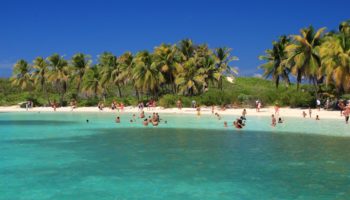


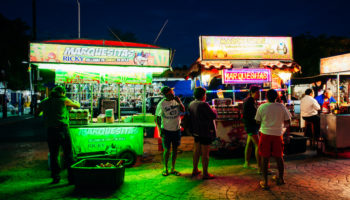

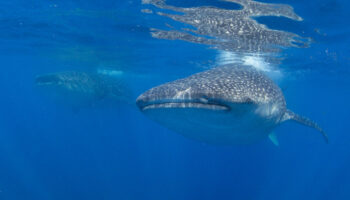
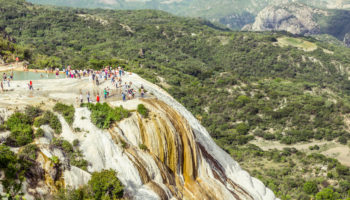
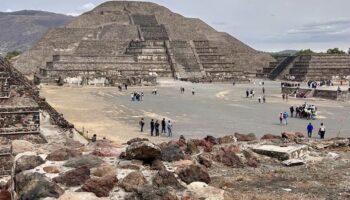

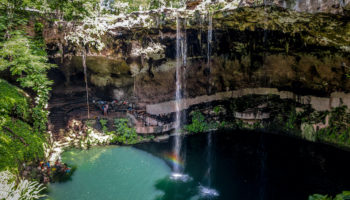
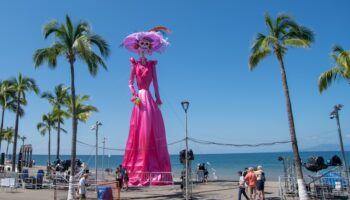
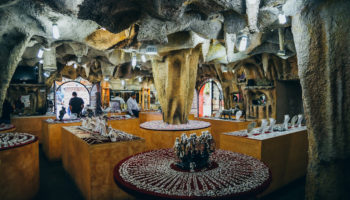
I was very lucky to tour Chichen Itza and I actually climbed Temple of Kukulkan.
On my bucket list, before I die, to visit Chichen Itza.